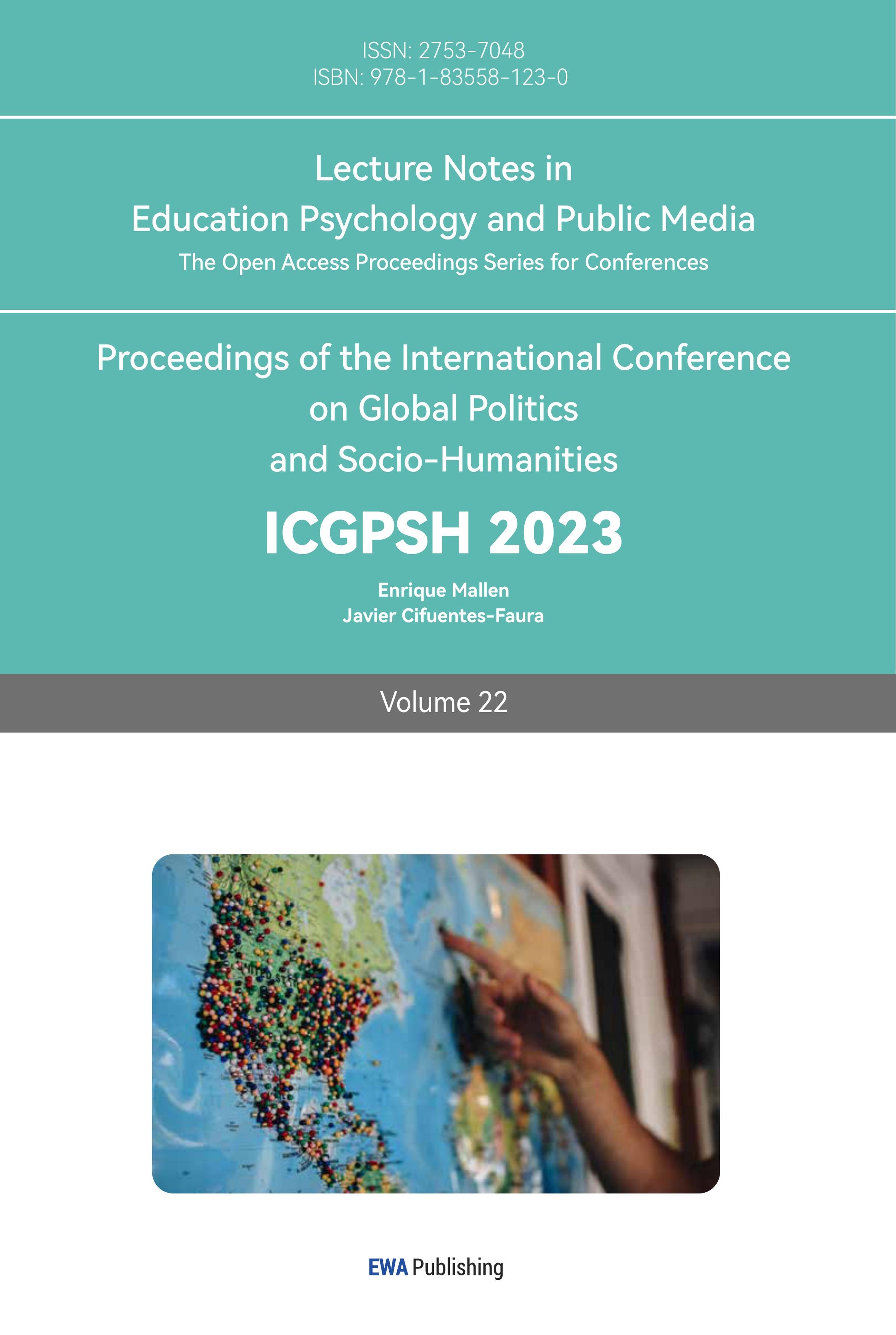References
[1]. Nicholas M.(1999).An introduction to visual culture.Routledge, Londo,pp:4-7.
[2]. Stokes J, Price B.(2017). Social media, visual culture, and contemporary identity.11th International Multi-conference on society, cybernetics, and informatics. IMSCI: https://www. is. org/CDs2017/CD2017Summer/papers/EA876TF. pdf.
[3]. Karimi M, Bemanian M R, Ansari M, et al.(2023) Recognition of the Components of the Urban Landscape Visual System Elements and Values. MANZAR, the Scientific Journal of Landscape, 15,62, 72-85.
[4]. Sadegh N.(2014). The Role OF Visual Communications in The Identity of the Urban Landscape.
[5]. Mitchell W J T. (2005). There are no visual media. Journal of visual culture, 4,2. 257-266.
[6]. Ginzarly M, Roders A P, Teller J.(2019) Mapping historic urban landscape values through social media. Journal of Cultural Heritage, 36,1-11.
[7]. Wu J.(2012). Changes of Shantytowns and Social and Cultural Mentality in Shanghai from the Perspective of Urban Landscape. China Famous Cities, 01,36-42.
[8]. Peng X., Sun B., Zhou J., etc.(2023). Landscape design is based on the sustainable concept of flatness combined with road greening. Modern Horticulture, 46,10. 88-90.
[9]. Bai C., Qian Z.(2020).A Preliminary Study on the Formation and Development of the Bund in the French Concession of Modern Shanghai.Journal of Tongji University (Social Science Edition), 31,06.103-111+124.
[10]. Zhang H.(2008).The Concession and Modern Shanghai Municipal Modernization.Journal of Jiaozuo Teachers College.01,37-40.
[11]. Wu J. (2008).From Water Village to City: Modern Shanghai Urban Road System Evolution and Environment (1843-1949). Fudan University.
[12]. Shengyun Xie.The research on the park and open space of Shanghai concession.
[13]. Alizadeh B, Hitchmough J.(2019). A review of urban landscape adaptation to the challenge of climate change. International Journal of Climate Change Strategies and Management. 11,2,178-194.
Cite this article
Bai,Y. (2023). Historical Changes of Urban Landscape in the Field of Visual Culture: Take the Bund as an Example. Lecture Notes in Education Psychology and Public Media,22,23-34.
Data availability
The datasets used and/or analyzed during the current study will be available from the authors upon reasonable request.
Disclaimer/Publisher's Note
The statements, opinions and data contained in all publications are solely those of the individual author(s) and contributor(s) and not of EWA Publishing and/or the editor(s). EWA Publishing and/or the editor(s) disclaim responsibility for any injury to people or property resulting from any ideas, methods, instructions or products referred to in the content.
About volume
Volume title: Proceedings of the International Conference on Global Politics and Socio-Humanities
© 2024 by the author(s). Licensee EWA Publishing, Oxford, UK. This article is an open access article distributed under the terms and
conditions of the Creative Commons Attribution (CC BY) license. Authors who
publish this series agree to the following terms:
1. Authors retain copyright and grant the series right of first publication with the work simultaneously licensed under a Creative Commons
Attribution License that allows others to share the work with an acknowledgment of the work's authorship and initial publication in this
series.
2. Authors are able to enter into separate, additional contractual arrangements for the non-exclusive distribution of the series's published
version of the work (e.g., post it to an institutional repository or publish it in a book), with an acknowledgment of its initial
publication in this series.
3. Authors are permitted and encouraged to post their work online (e.g., in institutional repositories or on their website) prior to and
during the submission process, as it can lead to productive exchanges, as well as earlier and greater citation of published work (See
Open access policy for details).
References
[1]. Nicholas M.(1999).An introduction to visual culture.Routledge, Londo,pp:4-7.
[2]. Stokes J, Price B.(2017). Social media, visual culture, and contemporary identity.11th International Multi-conference on society, cybernetics, and informatics. IMSCI: https://www. is. org/CDs2017/CD2017Summer/papers/EA876TF. pdf.
[3]. Karimi M, Bemanian M R, Ansari M, et al.(2023) Recognition of the Components of the Urban Landscape Visual System Elements and Values. MANZAR, the Scientific Journal of Landscape, 15,62, 72-85.
[4]. Sadegh N.(2014). The Role OF Visual Communications in The Identity of the Urban Landscape.
[5]. Mitchell W J T. (2005). There are no visual media. Journal of visual culture, 4,2. 257-266.
[6]. Ginzarly M, Roders A P, Teller J.(2019) Mapping historic urban landscape values through social media. Journal of Cultural Heritage, 36,1-11.
[7]. Wu J.(2012). Changes of Shantytowns and Social and Cultural Mentality in Shanghai from the Perspective of Urban Landscape. China Famous Cities, 01,36-42.
[8]. Peng X., Sun B., Zhou J., etc.(2023). Landscape design is based on the sustainable concept of flatness combined with road greening. Modern Horticulture, 46,10. 88-90.
[9]. Bai C., Qian Z.(2020).A Preliminary Study on the Formation and Development of the Bund in the French Concession of Modern Shanghai.Journal of Tongji University (Social Science Edition), 31,06.103-111+124.
[10]. Zhang H.(2008).The Concession and Modern Shanghai Municipal Modernization.Journal of Jiaozuo Teachers College.01,37-40.
[11]. Wu J. (2008).From Water Village to City: Modern Shanghai Urban Road System Evolution and Environment (1843-1949). Fudan University.
[12]. Shengyun Xie.The research on the park and open space of Shanghai concession.
[13]. Alizadeh B, Hitchmough J.(2019). A review of urban landscape adaptation to the challenge of climate change. International Journal of Climate Change Strategies and Management. 11,2,178-194.









